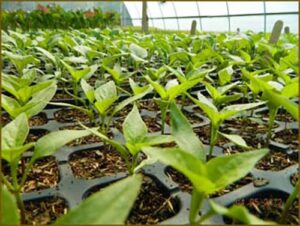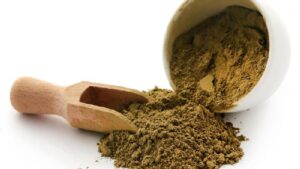
Carthamus tinctorius, commonly known as safflower, is an annual plant reaching approximately 60 centimeters in height. This plant is somewhat prickly and has wide, toothed leaves without lobes. Indigenous to Iran, safflower grows in various regions, including Baluchestan, Khorasan, Tafresh, Kerman Province (including cities like Golbaf and Shahdad), Tabriz, Chaharmahal and Bakhtiari Province, and the village of Khoy in Shahr-e Kord, among other areas.
Cultivation:
The timing of safflower cultivation depends on the local climate. In temperate regions, the ideal sowing period is late Bahman to early Farvardin, while in colder regions such as Zanjan, mid-Esfand to late Farvardin is suitable for sowing. The most favorable sowing time in warm regions is considered to be the second half of Azar.
Traditional Cultivation:
In this method, using tools like disks, harrows, etc., 25-20 kilograms of seeds are uniformly spread over one hectare of farmland and then plowed under.
Mechanized Cultivation:
In this approach, safflower seeds are mechanically planted at appropriate intervals.
Growth:
Safflower exhibits good heat resistance and can tolerate temperatures around 40 degrees Celsius if there is sufficient soil moisture. Due to its deep roots, safflower can absorb moisture from depths of 3 to 4 meters in the soil. While safflower can grow in various soil types, it prefers deep soils with medium texture and near-neutral acidity. It can be cultivated in warm areas with thick surface soil. Irrigation is essential with seven waterings during stages after sowing, germination, rapid stem growth, bud formation, flowering, and seed setting.
Harvest:
The plant’s height, the number of secondary branches, and the quantity of seeds in the head are crucial factors affecting flower yield. Safflower flowers can be harvested three days after the start of flowering until the end of the flowering period. Harvesting the flowers does not negatively impact seed yield. To preserve color and color quality, harvested flowers should be dried in the shade rather than in direct sunlight. Environmental factors such as air temperature and relative humidity significantly influence the timing of seed harvest. After the leaves have dried and turned brown, and the center seeds have become hard, the harvest can begin. At the time of harvest, the moisture content of the seeds should be around 8%, as excessive drying of the plant can cause the seeds to scatter during harvest.






